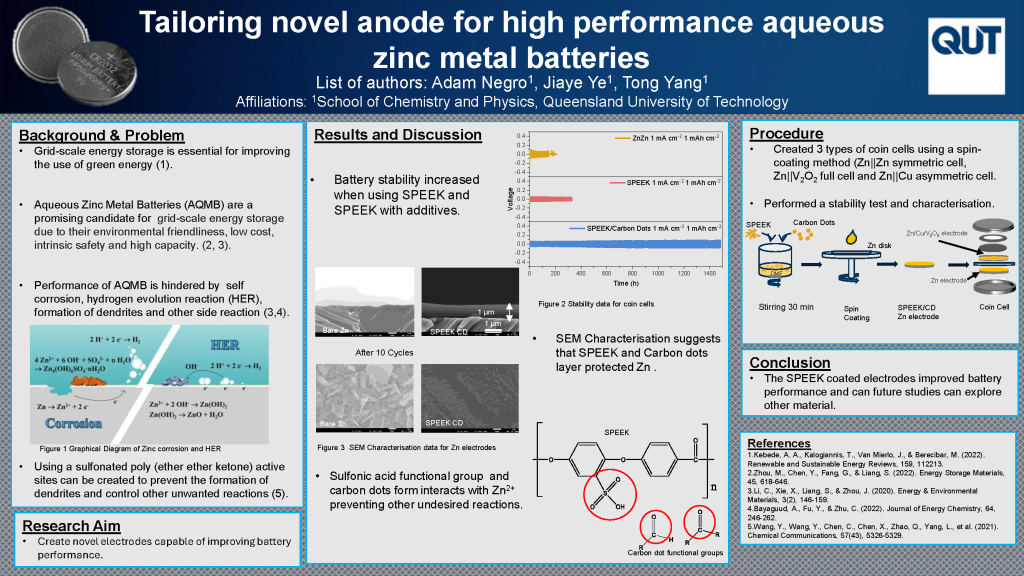Tailoring Novel Anode for High Performance Aqueous Zinc Metal Batteries
Adam Negro
Supervisors: Dr. Jiaye Ye & Tong Yang
Battery systems have become critical for the successful integration of renewable energy into the power grid. Aqueous metal zinc batteries are a prominent candidate for grid-scale energy storage because of their inherit safety, low cost and high performance. The performance of these batteries has been severely hindered by their self-corrosion, development of dendrites, hydrogen evolution reactions and other undesirable side reactions. We believe these limitations can be overcome by creating an artificial thin layer above the electrode. In this investigation we aim to create novel electrodes which can improve battery performance. We applied a spin-coating method to add a layer of sulfonated poly (ether ether ketone) (SPEEK) and additives on to zinc electrodes. Using these spin-coated electrodes we created three different types of cells being Zinc||Zinc symmetric cells, Zinc||Vanadium Oxide full cells and Zinc||Copper asymmetric cells. A cycling stability test was performed to determine the cells’ longevity. We made comparisons between these batteries and non-spin coated counterparts as well as SPEEK without additives. Our experimental findings have shown that zinc electrodes containing SPEEK with additives were significantly more stable than both bare zinc electrodes and only SPEEK coated electrodes. From characterisation it was found that the SPEEK with additives layer protected the zinc electrode by preventing unwanted side reactions and facilitating uniform zinc deposition. The use of spin-coating techniques have proven to be an effective way of creating novel electrodes which can improve battery performance.
Media Attributions
- Tailoring novel anode for high performance aqueous zinc metal batteries © Adam Negro is licensed under a CC BY-NC (Attribution NonCommercial) license


